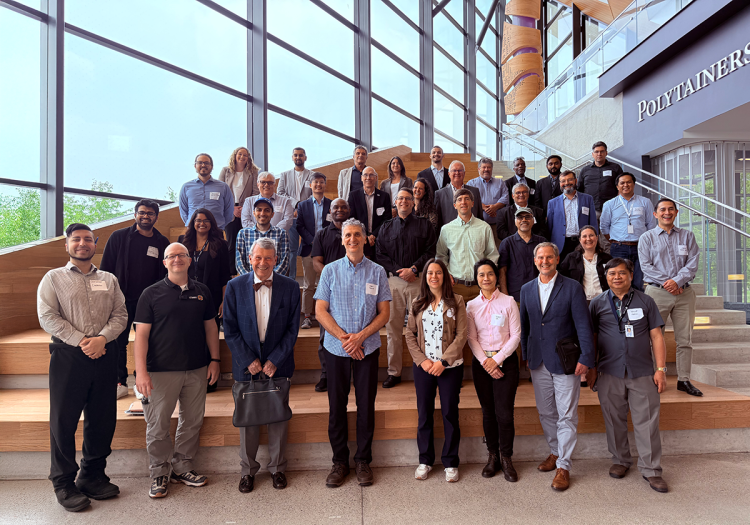Emerging emergency communications technologies using the NextGen broadcast communications system were on display when Humber Polytechnic's Broadcast-Broadband Convergence B²C Lab hosted the Emergency Management Community Symposium.
The symposium featured presentations and demonstrations from industry experts on a Next Generation Broadcast Communications Network for First Responders, Broadcast Digital Signage and an Aerial Incident Response System designed to provide situational awareness of Uncrewed Aircraft Systems (UAS) for crewed aircraft, allowing for safe and more efficient integration of UAS in operational airspace.
There was also a presentation and demonstration of a complementary positioning and timing system known as the Broadcast Positioning System (BPS). This is a ground-based time-transfer system designed to enhance the resilience of the increasingly vulnerable Global Positioning System (GPS). Over the past four decades, our society has grown heavily reliant on GPS in everyday life. Timing signals from GPS satellites enable functionality of multiple critical infrastructure sectors, including telecommunications, all modes of transportation, hydro and power grids, and the banking system, to name a few.

The B²C Lab is the first of its kind in North America and is located at the Barrett Centre for Technology Innovation at Humber's North Campus. The lab explores multisectoral applications using the new IP-based ATSC 3.0, a next generation terrestrial IP-based broadcast transmission standard, set to replace the current North American standard, ATSC 1.0. This new technology offers much more than just streaming TV into your home.
Over-the-air broadcasting is a popular and long serving method for mass communication, and ATSC 3.0 elevates this capability by merging new broadcast capabilities with IP-based communications. The technology enables data broadcasting over large distances of more than 100 kilometres, making it ideal for delivering location-specific information to first responders during emergencies and improving access to education and health-care services in underserved areas.
Broadcast solutions can bolster the resilience of municipal networks in the face of catastrophic events and disasters when other communications infrastructure becomes overwhelmed or inoperable in crisis situations.
Orest Sushko, director, B²C Lab, used the 1979 Mississauga train derailment as an example where an emergency forced the evacuation of more than 200,000 people, the largest civilian evacuation in North America at that time. In the fall, he met with representatives from the City of Calgary, who have partnered with the B²C Lab on an ATSC 3.0 municipal use project that is exploring how ATSC 3.0 broadcast technology can improve municipal services, increase connectivity and drive impact by enhancing efficiency for a more connected Calgary.
Sushko brought up a scenario where communications infrastructure was destroyed, and cell phones weren't working.
"That set off a lot of sobering discussions," said Sushko. "That scenario could happen anywhere, at anytime, and the question remains, how are we prepared for widespread loss of communications infrastructure?"
Erin Ruttan, digital equity program designer with the City of Calgary, said ATSC 3.0 gives them the opportunity to use existing broadcast technology to make sending emergency alerts flexible and more efficient.
"It allows us to provide timely and authentic information to community members, on the device that they have, right from our municipal government," said Ruttan.
One of the main attractions of this technology is how it can withstand extreme events and continue operating. During a crisis, it is critical to have a reliable channel to disseminate information.
Red Grasso, director, First Responder Emerging Technologies Program at the State of North Carolina Department of Information Technology, said the PBS North Carolina TV Network had eight television sites and 5,800 cellular sites during Hurricane Florence and that there were more than 1,000 cellular site failures but none for the television sites.
Fred Engel, CPBE, ATSC3, broadcast technology consultant noted that Broadcast Towers didn't go down during any of their recent hurricanes, including Hurricane Helene.
Learn more about ATSC 3.0 by visiting the B²C Lab website.













